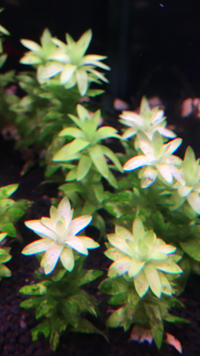_Maq_
Member
I do not insist I'm always right. @Hanuman may very well be right, the more so he's obviously got a lot of experience with this Cabomba. @milesjames , you opted to follow his advice, please, go ahead.
I'd just like to explain that phototoxicity can lead to pale tops of plants, i.e. lack of chlorophyll, for which magnesium and iron are essential. This does not necessarily mean that either iron or magnesium are insufficient as such. It's a physiological problem which I've faced with various species and, frankly, not always succeeded to fix. I suspect it's quite a common issue. But I'm not the right guy to explore this problem because I run low-tech and my lighting is always on the moderate side.
I'd just like to explain that phototoxicity can lead to pale tops of plants, i.e. lack of chlorophyll, for which magnesium and iron are essential. This does not necessarily mean that either iron or magnesium are insufficient as such. It's a physiological problem which I've faced with various species and, frankly, not always succeeded to fix. I suspect it's quite a common issue. But I'm not the right guy to explore this problem because I run low-tech and my lighting is always on the moderate side.



